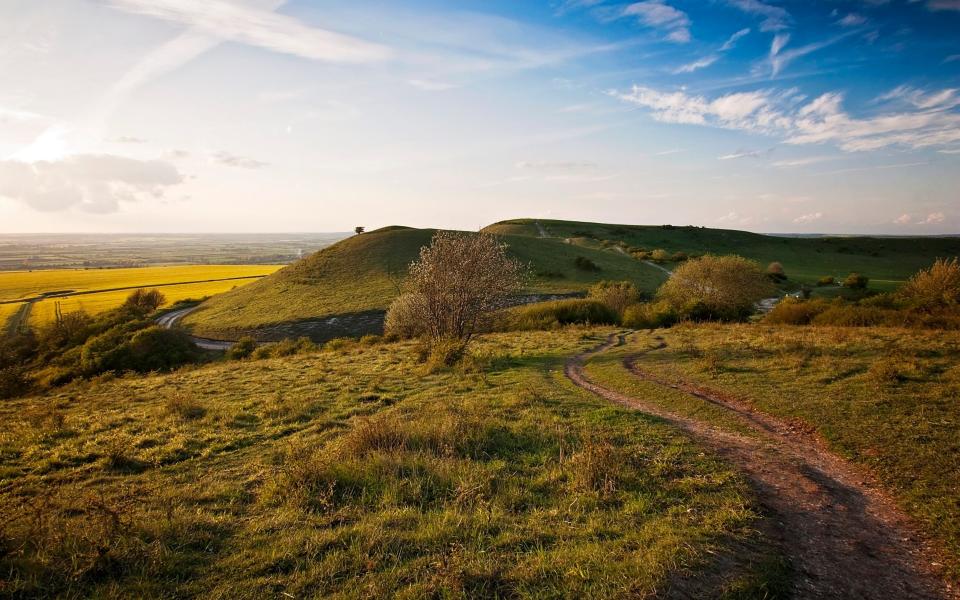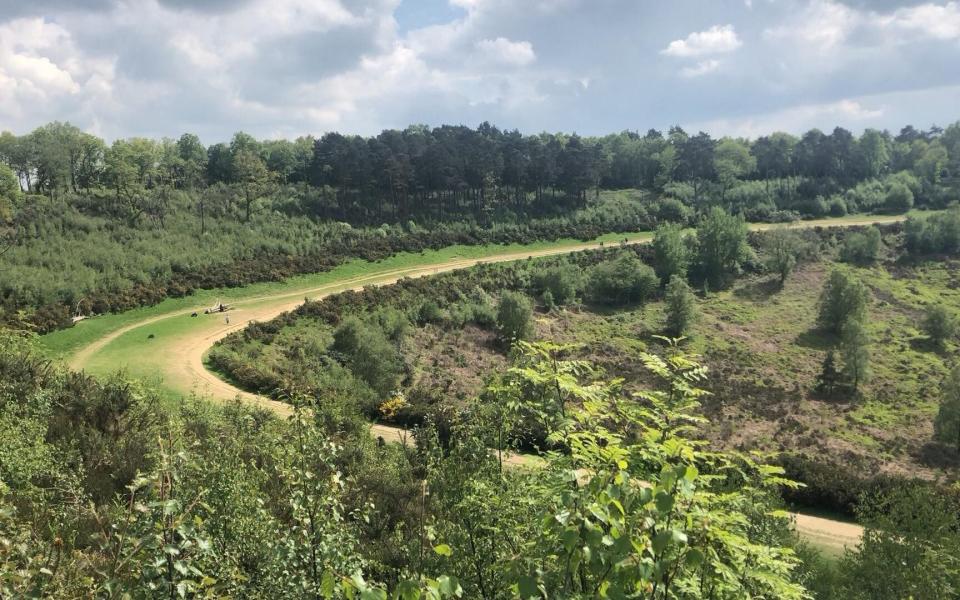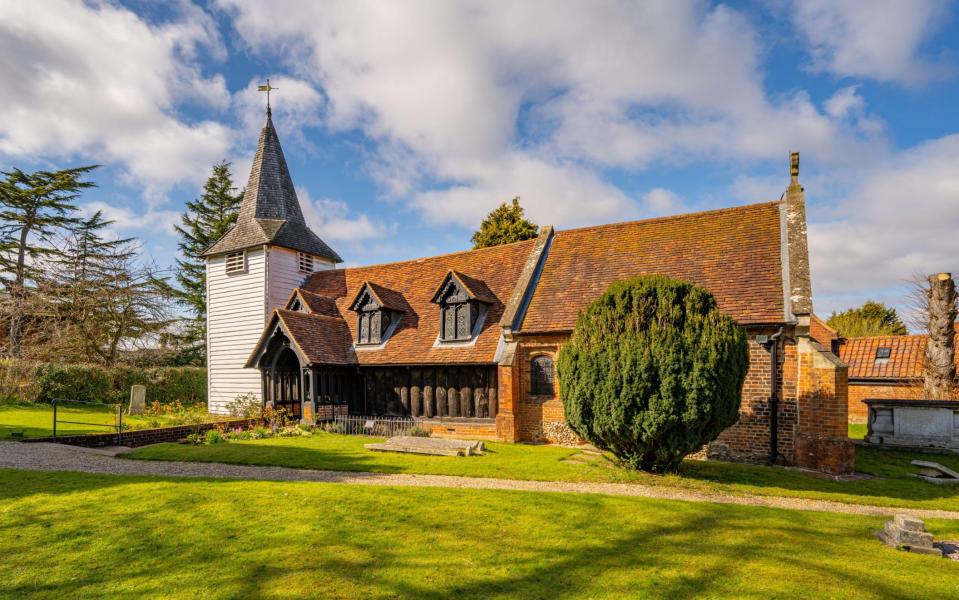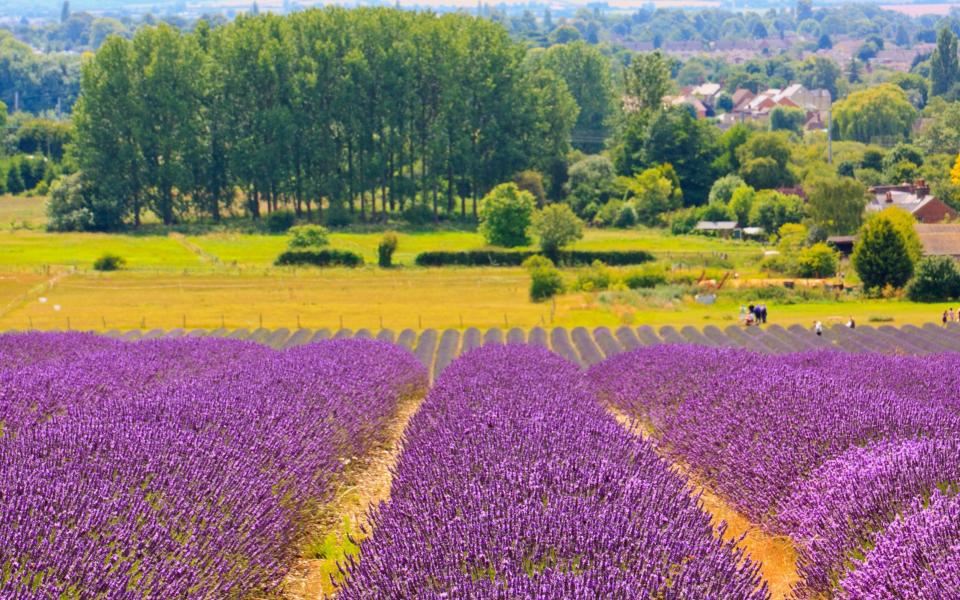In 1914, a man named Aston Webb told the London Society that he had a vision for the capital 100 years from now. He envisaged “a beautiful woodland almost throughout London”, with “a certain amount of open space, pleasure ground” protected by “town planning schemes”. He described this vision as a “green belt”.
It turns out Webb was onto something. In the 1930s, work began to protect the English countryside from uncontrolled urban sprawl, and today there are 14 green belts across the country, covering more than a tenth (12.4%) of the entire English land area and home to more than 30 million people.
There are green belts in Oxford, Birmingham, Newcastle, York and many other city centres, but the largest and best-known of these is the 486,000-hectare area stretching from the M25 to the suburbs of London.
The capital’s green belt is a favourite with commuters (Guildford, Sevenoaks and St Albans are all within its boundaries) but it’s also home to some attractions you wouldn’t expect to find so close to the capital, many of which would make for a perfect weekend getaway.
Ivinghoe Beacon, Buckinghamshire

Set amidst wildflower meadows and ancient woodland, Ivinghoe Beacon is the bulbous starting point of The Ridgeway, the National Path that runs through the Chiltern Hills.
During your visit, you’ll share the hill with dog walkers and the odd model aircraft enthusiast (it’s a prime spot for “gliding down the slope” because of the lift created by the wind blowing over the top), but people have lived here for many years. Archaeological evidence suggests activity dating back to the Bronze Age, including burial mounds, and there’s the vaguest outline of an Iron Age hill fort on the summit.
Take the 10-mile circular walk and you might spot one of the rare butterfly species that live in the area, or even a red kite or a glowworm. But the biggest thrill for many will be that Ivinghoe Beacon was used as a filming location for many of the Harry Potter films. The most famous scene is perhaps Goblet of Fire When Harry and his friends walk up the hill to find an old boot (a key) that leads to the Quidditch World Cup.
How to get there
The nearest train stations are in Tring and Dunstable, from there you will need to take a bus or taxi to Ivinghoe Beacon. If you are travelling by car, type “Ivinghoe Beacon Circular Walk Car Park” into Google Maps.
Stay here
Consider the Kings Arms Hotel in Berkhamsted, less than 20 minutes’ drive away. Our expert reviewer describes it as: “A revived carriage house that’s once again a vibrant food, drink and accommodation hub, right in the heart of Berkhamsted town centre. Expect a ‘passion for the pub’ vibe, plus a good restaurant and a range of comfortable rooms.”
Devil’s Punch Bowl, Surrey


It’s a pretty good name for a leafy corner of the Home Counties. Legend has it that the devil took great handfuls of Earth and threw them at the god Thor, leaving the great natural amphitheatre that exists today (the name of the local village of Thursley means ‘Thor’s place’). Whether that’s true or not – or indeed, the result of thousands of years of erosion caused by spring water beneath the sandstone to collapse the upper level – the site offers a breath of fresh air from the capital.
Devil’s Punch Bowl has been made infinitely more enjoyable since 2011 when the busy single-lane section of the A3 skirting the edge of the site was rerouted through the new Hindhead Tunnel, which now runs below. The former section of road is now marked out as a footpath within the park.
For the full experience, set out to complete the 4.5-mile hike that takes you to the top of the punchbowl (you’ll get the best views of the impressive grounds in winter, when you’re unobstructed by trees), but take time to soak in the hollow, with its shady woods and babbling brooks.
How to visit
Haslemere Station (with connections to London) is three miles away, and you can catch a bus that drops you off a few hundred yards away. Devil’s Punch Bowl National Trust car park (GU26 6AB) costs £4, or is free for National Trust members.
Stay here
Try the Merry Harriers Hotel in Hambledon, a 20-minute drive away. Our reviewer says: “This 16th-century country inn is all about crackling fires and contemporary bedrooms, wellies and muddy paws. Guests can also go llama walking in the scenic Surrey Hills, knowing a warm return awaits.”
Essex villages


At the eastern edge of London’s green belt you’ll find a number of pleasant villages, including little Greensted-juxta-Ongar, home to the oldest wooden church not just in Britain but in the world. The 51 planks that make up the nave of St Andrew’s Church were cut from English oaks around 1060, six years before William the Conqueror arrived in Britain.
You might not guess it, but nearby Ongar was the last station on a branch of the Central Line, which closed in 1994 but was later revived as the Epping Ongar Railway (adult tickets £7.50).
Beyond the green belt boundaries in rural Essex are many other pretty villages, including Finchingfield (postcard pretty with its village green and duck pond), Thaxted (famous for the Morris Men) and Dedham (a National Landscape made famous by John Constable).
How to visit
There are connections to London from Epping, where you can take the aforementioned railway to Ongar. Otherwise, you’re a stone’s throw from the M25, making it easy to reach the villages by car.
Stay here
There are several pubs with rooms in the area (this Telegraph roundup is a good starting point). For something a little different, book a place at luxury hideaway Colemans Farm, which has a treehouse (The Old Oak; from £250) and a glass-roofed pyramid-shaped room called The Trap (from £155).
Denbies Vineyard, Surrey


If you’ve never visited an English vineyard before, Denbies should be at the top of your list. Set against the backdrop of the North Downs, one of the country’s largest single-estate vineyards, it has seven miles of public footpaths to explore across its 650 acres – ask at the gift shop and they’ll be able to provide you with a map for the little ones.
Denbies is also the site of the annual Bacchus Wine Half Marathon & 10k (inspired by the famous Marathon du Médoc in Bordeaux) held in September. The runners, mostly in smart attire, take regular breaks to sample English wines along the way. It’s a fun event to join in or just to observe.
How to visit
Denbies is a pleasant 15-minute walk from Dorking and Box Hill and Westhumble stations, providing easy access to London. If you are driving, exit the M25 at Junction 9 and then follow the A24 south towards Dorking.
Stay here
Denbies has its own Vineyard Hotel, with 17 en suite rooms and a new restaurant and bar area. Alternatively, splurge on a stay at the Beaverbrook just up the road, which offers a tantalising glimpse into British high society with its original artworks and landscaped gardens.
Hitchin Lavender Fields, Hertfordshire


No, this is not a photo of Provence. It’s the Lavender Fields in Hitchin, 11 miles from Luton Airport.
The farm has been in the Hunter family for five generations and is mainly a lavender grower for oil, but has grown in popularity over the last decade thanks to the rise of social media photo-sharing apps such as Instagram. There’s an entry fee of £7 and you’ll need to pay an extra £4 to fill a bag of lavender (on a bring-your-own-scissors basis).
“It used to be that you would get locals who would come out for a walk and pick up a little bunch of flowers to take home – maybe a little older people. But now, you get people from all over the world and all ages. It really has mass appeal,” said Tim Hunter, the farm’s owner. Telegram In 2019.
How to visit
Direct trains from London to Hitchin take just over half an hour, otherwise head up the A1 and follow signs to Ickleford.
Stay here
Look no further than The Fox at Willian, set in a picture-perfect village. Our reviewer writes: “The Fox does everything a local country pub should do well, serving excellent food but still being a welcoming place to drop in for a pint in the village square. In short, a comfortable place to stay in the countryside, just a short walk from London – and dog-friendly too.”